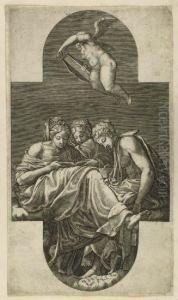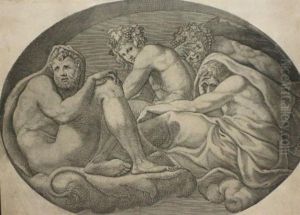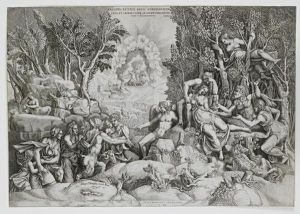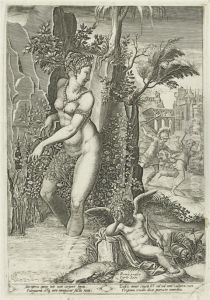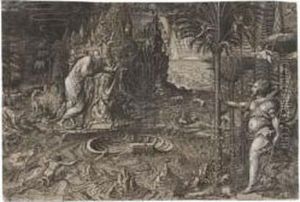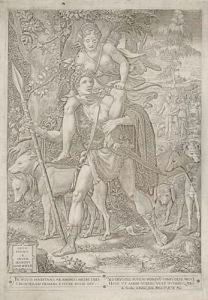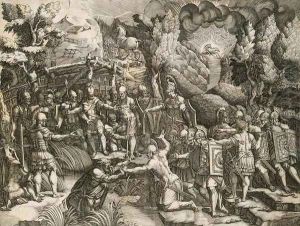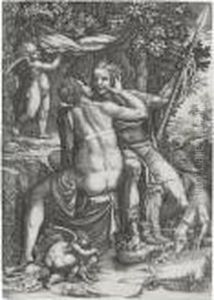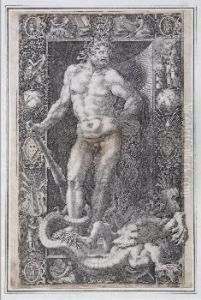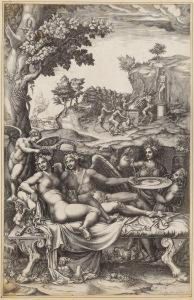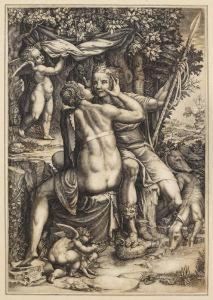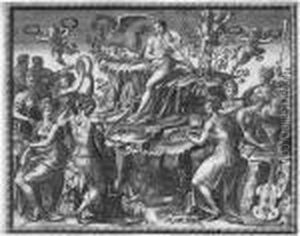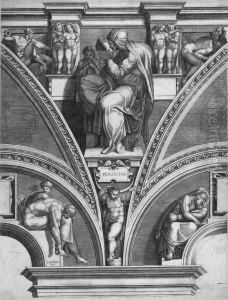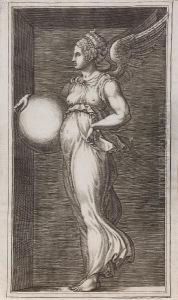Giorgio Ghisi Paintings
Giorgio Ghisi, also known as Giorgio Mantovano Ghisi, was an Italian engraver and painter, born in 1520 in Mantua, Lombardy. He was a prominent figure in the Italian Renaissance, known for his intricate engravings which often replicated or were inspired by the works of contemporary painters. Ghisi was part of a family of artists; his brothers Teodoro and Giovanni Battista were also involved in the arts.
Ghisi was trained in the Mantuan tradition and was heavily influenced by the Roman school of engraving, which included artists like Marcantonio Raimondi. He moved to Rome early in his career, where he was exposed to the works of Raphael and Giulio Romano. Ghisi's engravings were known for their complexity and the skill with which he translated paintings into the medium of printmaking.
Throughout his career, Ghisi collaborated with prominent artists of his time and executed engravings after their paintings, including works by Raphael, Michelangelo, and Parmigianino, among others. He was recognized for his ability to capture the essence of the original paintings, meticulously reproducing the tones and shading necessary to convey their depth and beauty in his prints.
Ghisi's works were widely disseminated and collected across Europe, contributing to the spread of the Italian Renaissance style. His engravings served not only as works of art but also as a means for those who could not travel to see the original paintings in situ. This helped to establish his reputation as one of the foremost engravers of his time.
He returned to Mantua later in his life, where he continued to work and contribute to the artistic life of the city until his death in 1582. Today, Giorgio Ghisi is remembered for his masterful engravings that continue to be studied for their technical excellence and their role in the history of art.



